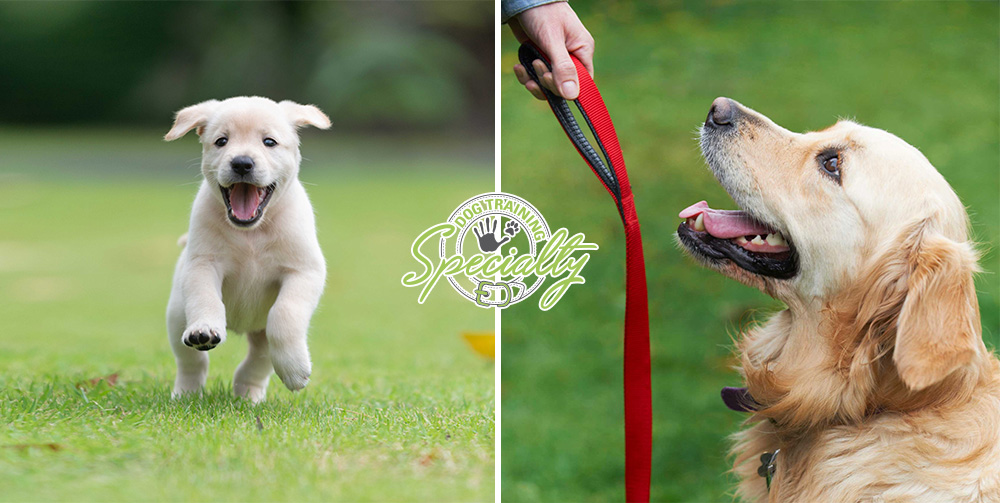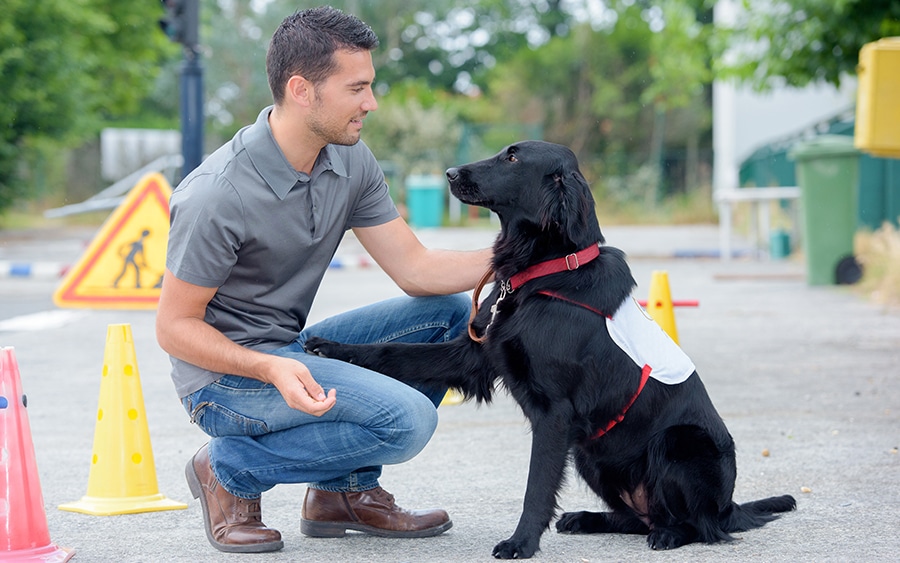The Ultimate Guide to Dog Training Charlotte: Methods for Success
Wiki Article
Unlock Your Pet's Possible: Proven Pet Training Techniques for Success
Reliable pet dog training is a nuanced process that pivots on recognizing canine actions and employing scientifically backed techniques. By incorporating positive support, developing clear commands, and prioritizing socializing, pet proprietors can grow an effective relationship with their pets.Recognizing Pet Behavior
Understanding pet habits is necessary for effective training and fostering a favorable connection between pets and their proprietors. A comprehensive grasp of canine body language, vocalizations, and social communications is important for acknowledging their needs and feelings. Canines communicate mostly with non-verbal hints; for example, a wagging tail might indicate exhilaration, while pinned ears can signal fear or entry.
Additionally, ecological aspects play a substantial role fit a dog's behavior. Modifications in regular, new surroundings, or the presence of unknown people can result in stress or anxiety in dogs. Recognizing these triggers enables proprietors to reduce negative reactions and establish proper training approaches.
Ultimately, a deep understanding of canine behavior lays the structure for effective training approaches, improving both behavior and the general bond between the pet dog and its owner. dog training near me. This understanding is important for promoting a well-adjusted, satisfied canine buddy
Positive Support Methods
Efficient training counts heavily on positive support techniques, which have been shown to generate significant cause shaping preferred actions in pet dogs. This method includes compensating a pet dog for showing details behaviors, thus boosting the likelihood that these behaviors will be repeated. Incentives can take various forms, including treats, praise, toys, or playtime, depending upon what inspires the specific pet.
It is important to gradually phase out rewards as the pet dog discovers the habits, transitioning to intermittent support. This strategy preserves the habits in time while avoiding dependency on constant benefits. By concentrating on positive reinforcement, fitness instructors can cultivate a relying on relationship with their dogs, advertising a healthy and participating training atmosphere that boosts overall obedience and efficiency.
Developing Regular Commands
A basic aspect of successful pet dog training is the establishment of constant commands. Consistency in commands is crucial for efficient interaction in between the trainer and the pet. When commands are uniform, dogs find out to connect particular words with preferred habits, which accelerates the training process and improves understanding.To establish constant commands, it is necessary that all member of the family make use of the very same terminology and gestures. For instance, if someone makes use of "rest" while an additional states "sit down," it can produce confusion for the pet dog. Select clear, unique words for commands and make content certain everybody associated with the dog's training sticks to these selections.
Enhance commands via regular practice, making sure that the pet obtains enough opportunities to react appropriately. When a dog successfully complies with a command, immediate positive support ought to adhere to.
Lastly, hold your horses. Developing consistent commands takes time and effort. With dedication and clarity, you will certainly assist your pet establish a solid understanding of assumptions, eventually resulting in a well-behaved friend.
Socializing and Direct Exposure
Socializing a dog is important for cultivating a confident and well-adjusted buddy. This procedure entails subjecting your pet to a variety of environments, individuals, and various other animals to establish their social abilities and flexibility. Early socialization, preferably in between the ages of 3 to fourteen weeks, is critical, as it lays the groundwork for a pet's future behavior.
During socialization, objective to give positive experiences in different settings, such as parks, hectic roads, and homes with various other pets. Introduce your canine to numerous stimulations, consisting of audios, sights, and scents, making sure that each experience is fulfilling. This direct exposure aids alleviate worry and anxiety, leading the way for a more resilient canine.
Engaging in regulated team play sessions with various other canines can likewise boost social skills, educating your family pet appropriate communications and limits. Always monitor your canine's convenience degree during these experiences, slowly boosting direct exposure as their self-confidence grows. Remember, the objective is to develop a well-rounded pet that flourishes in diverse situations, advertising an unified connection with both human beings and other animals. Focusing on socializing will considerably contribute to your pet's general happiness and behavior throughout their life.
Overcoming Common Training Obstacles

Pet dogs might struggle to focus in hectic or unknown setups. Gradually desensitize your pet dog to disturbances by starting training in a quiet environment and slowly presenting even more stimulations as they become competent.
Furthermore, behavior concerns like leaping or excessive barking can end up being irritating. Address these by teaching alternative habits, such as resting steadly when welcoming visitors. Uniformity and perseverance are crucial; reinforce desired behaviors regularly and prevent scolding, which can result in confusion.
Finally, acknowledge that each pet dog is one-of-a-kind, and training timelines might differ. Dressmaker your technique to your pet dog's private requirements, and seek expert assistance if required. With perseverance and the appropriate approaches, getting over these obstacles can cause a trained, pleased canine companion.
Conclusion
To conclude, opening a pet dog's prospective requires a comprehensive approach that includes Read Full Report an understanding of canine behavior, the application of favorable reinforcement techniques, and the facility of constant commands. Early socialization and exposure to diverse settings additionally improve a dog's flexibility and self-confidence. By resolving typical training challenges with customized methods and persistence, a cooperative and unified connection in between pet dog and handler can be cultivated, ultimately causing a well-behaved friend with the ability of thriving in numerous circumstances.Reliable canine training is a nuanced procedure that hinges on recognizing canine habits and using clinically backed strategies.Recognizing dog behavior is important for efficient training and fostering a positive partnership between dogs and their proprietors.Reliable training relies heavily on favorable reinforcement techniques, which have actually been shown to produce significant results in forming desired behaviors in pet dogs. When commands are uniform, canines find out to associate particular words with wanted behaviors, which speeds up the training procedure and boosts understanding.
In conclusion, unlocking a pet check my reference dog's possible necessitates a thorough method that includes an understanding of canine actions, the application of positive reinforcement methods, and the facility of regular commands.
Report this wiki page